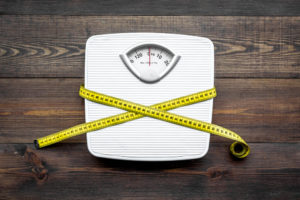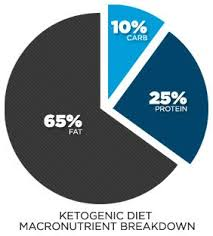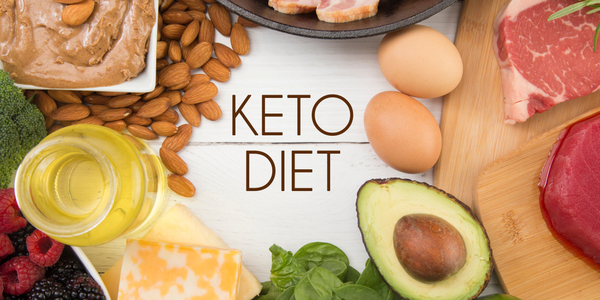Ketogenic diets are currently all the rage. Seemingly every health personality has an opinion on the ketogenic diet and some tout it as a cure-all for everything from diabetes to cancer, while others express skepticism or disagree with some aspects of the diet. My take is that the keto diet could help alleviate conditions like obesity and type 2 diabetes and even impact the progression of some types of cancer, but it isn’t for everyone.
What is the Keto diet?
The ketogenic diet is a high-fat, moderate-protein, low-carb food plan. By strictly limiting dietary carbohydrates, the ketogenic diet encourages the body to switch from using glucose as a primary fuel source to burning body fat and using ketones for fuel. This metabolic switch has a variety of beneficial effects on the body, ranging from fat loss to improved brain function.
A ketogenic diet differs dramatically from the carbohydrate-heavy standard American diet. When you eat a carbohydrate-rich meal, the ingested carbs are broken down into glucose. Glucose is then shuttled into cells by insulin, where it is used for energy production. The constant consumption of a high-carbohydrate diet causes the body to rely on glucose (sugar) for fuel, while rarely tapping into fat stores for energy. A ketogenic diet does just the opposite. It forces the body to turn to fat for fuel. A keto diet encourages the production of ketones, small water-soluble compounds, and the “burning” of fatty acids in adipose tissue (fat cells) for energy. Ketones are unique in that they are rapidly taken up by tissues and broken down to yield ATP, the primary energy currency of the human body. The process by which the body switches to using ketones for energy is referred to as “nutritional ketosis,” while the process of tapping into your body’s fat stores is termed “fat adaptation.”
Conditions that are ideal for Keto
The ketogenic diet offers many health benefits, but it isn’t right for everyone. Keto may prove to be very beneficial for those who suffer from obesity, Metabolic Syndrome, Type 2 diabetes, PCOS (Polycystic Ovarian Syndrome, neurodegenerative diseases, brain injuries and epilepsy, digestive disorders including: Irritable Bowel, GERD, and SIBO, skin conditions such as: acne and psoriasis, and some forms of breast, prostate, colon, melanoma, and lung cancers. 
A growing body of research indicates that ketogenic diets are more effective than low-fat diets for sustaining long-term health improvements. Keto causes fat loss primarily from visceral fat, the hard-to-lose fat located deep in the abdominal cavity. The ketogenic diet also facilitates the suppression of the hunger hormone. This allows for weight loss without feeling hungry. Keto has shown other positive health improvements including significant reductions in body fat percentage, BMI, hemoglobin A1c levels, blood lipids, blood pressure, improved fertility, reduced abdominal gas, and reduction of cancer cells.
Most importantly, research indicates that the keto diet is sustainable over the long term. The benefits from the diet appear to be long lasting and not simply temporary. For those who do not wish to stay on the ketogenic diet long term, a cyclic ketogenic diet alternated with a nutrient-dense, whole foods diet can also lead to successful long-term health changes.
Who should avoid a ketogenic diet?
The ketogenic diet is not appropriate for everyone.
- If you have a genetic condition that affects fatty acid metabolism such as a primary carnitine deficiency or pyruvate carboxylase deficiency, a ketogenic diet is absolutely contraindicated.
- Pregnant and breastfeeding mothers should show caution with the ketogenic diet as the growing baby requires a steady glucose supply to support normal growth. However, the typical American diet is also contrary to the health of the baby. Mothers should strive for a low-carbohydrate diet that includes high nutrient carbohydrates such as fruit and starchy tubers.
- If you have gallbladder disease or no gallbladder you should be cautious on a ketogenic diet. The body needs bile to break down and digest dietary fat, and the gallbladder is responsible for storing bile before its release into the small intestine. Removal of the gallbladder and gallbladder disease cause fat malabsorption and may make it difficult to follow a ketogenic diet. Individuals with these issues may find Lecithin to be helpful to absorb fats with a higher fat diet.
- If you have high levels of stress a ketogenic diet may add to your struggles. Keto has been observed to raise cortisol, the body’s primary stress hormone. A diet that includes a moderate intake of carbohydrates is typically a better fit for those with high-stress lifestyles.
- If you’re an athlete that uses explosive movements in your sport such as jiu jitsu, mixed martial arts, CrossFit, or even some rigorous forms of dance, you may benefit from a moderate carbohydrate intake rather than the ketogenic diet. Explosive movements draw on your muscles’ glycolytic capacity, which is powered by glucose from dietary carbohydrates. Endurance athletes, on the other hand, may thrive on a ketogenic diet because their respective activities can be adequately fueled by fatty acid oxidation and ketones.
The three-step process to starting Keto
Step 1: Find your macronutrient ratio
Your exact macronutrient range may vary person to person and even day to day. Most people will find that their body will fall into ketosis within these macronutrient ranges:
- 60 to 75 percent of calories from fat
- 15 to 30 percent of calories from protein
- 5 to 10 percent of calories from carbohydrates
Step 2: Don’t count calories
I don’t recommend counting calories on the keto diet. Tracking your macronutrients, on the other hand, can be helpful. Try using an app for journaling your food intake and obtaining your ratios of macronutrients. I recommend the Carb Manager Keto App.
Step 3: Regularly test your ketones
To determine whether you’re in ketosis and what degree of ketosis you’re in, test your ketones each morning. Blood ketone testing is the most accurate method but urine and breath ketone tests are available. If your ketone value is above 0.5 mmol/L first thing in the morning, you’re in ketosis. However, a range of 0.7 to 2.0 mmol/L is optimal for most people. If your value is above 3.0 mmol/L, you may not be eating enough and/or should consider adding some carbohydrates back to your diet. However, in the long run, your goal should not be a specific number on the ketone meter, but an improvement in your symptoms.
10 tips and tricks to help you follow a ketogenic diet
Following a ketogenic diet can take some work and planning. Here are some tips and tricks to help you get into ketosis faster.
- Eat enough calories and protein
Failing to consume enough calories on a keto diet can cause fatigue and insomnia, while insufficient protein intake promotes weight gain and muscle loss. When you first begin a keto diet, it can be helpful to track your food intake as this will allow you to visualize your macronutrient intake and ensure that you don’t undereat calories or protein.
- Add supplemental fat
Fat is the primary source of fuel on a ketogenic diet, and supplementing with specific types of fat, particularly coconut oil and flax and fish oils can help you get into ketosis faster. You may also wish to focus on dietary fats such as olive oil, avocados, fatty fish, nuts, and seeds.
- Drink apple cider vinegar
Consuming apple cider vinegar before meals not only assists digestion but may also promote ketone production due to its content of acetic acid, a naturally occurring ketogenic compound. Try adding a tablespoon or two to water and drinking before you eat your meal.
- Eat more sodium, magnesium, and potassium rich foods
Sodium, magnesium, and potassium levels can drop on a ketogenic diet due to its dehydrating effect on the body. Make sure to eat plenty of foods containing these electrolytes. Some of the best keto-friendly sources are Himalayan salt, sea salt, dark leafy greens, nuts and seeds, cacao, spinach, kale, avocados, and mushrooms.
- Stock up on Keto-friendly snacks
Keep keto-friendly snacks on hand so that when hunger strikes, you have healthy food at the ready; this strategy will help prevent you from falling off the keto wagon and reverting to high-carb snack foods. Nuts and seeds, coconut butter, beef jerky, and hard-boiled eggs make for easy, portable keto snacks.
- Try intermittent fasting
Intermittent fasting, an eating style in which you eat within a specific period each day and fast the rest of the time, is a great way to reduce the amount of time your body needs to enter nutritional ketosis. Intermittent fasting accelerates the time to ketosis by keeping insulin levels low and raising ketone levels. If you’re new to intermittent fasting, start by limiting your eating to an eight- to 10-hour window each day and fasting for the remaining 14 to 16 hours of the day (and night). Check out a previous blog post that we posted earlier this year, Intermittent Fasting.
- Prioritize sleep

Inadequate sleep will rapidly derail your keto efforts by increasing your blood sugar and levels of stress hormones. Getting eight to nine hours of high-quality sleep per night should be a priority. Maintain a regular bedtime schedule and practice sleep hygiene strategies such as keeping your bedroom completely dark at night, lowering the ambient temperature to around 67 degrees Fahrenheit, and avoiding blue light exposure a couple of hours before bed with blue light-blocking glasses.
- Exercise
Frequent exercise depletes glycogen stores, causing your body to turn to fat for energy; this means that regular exercise can help you get into ketosis faster. Some people experience a reduced capacity for exercise upon starting keto; in this case, engaging in longer durations of low-intensity activity, such as walking, cycling, or swimming, can help you get into ketosis without causing undue fatigue.
- Drink plenty of water
Within the first few days of starting a ketogenic diet, you may experience a significant loss of water weight. This occurs primarily because glycogen stores in muscle are gradually being reduced, and glycogen causes retention of water. To ensure that you don’t become dehydrated on keto, drink half your weight in ounces of filtered water every day.
- Use Bone Broth Protein

Bone broth is a unique source of supplemental protein that the body can easily absorb. When combined into a meal or smoothie this protein source can greatly improve the macronutrient ratios for those trying to remain on a ketogenic diet. Bone Broth Protein is also very helpful for those looking to improve digestive health while on the Keto diet.
The Keto diet is not for everyone but it might be just what your body needs. Try it for 30 days and see how your body reacts… you might just be surprised!
If you have any questions on how the keto diet may help you, please feel free to ask our staff. We love to help and are here to assist you in becoming healthier than you have ever been.
For the next two weeks Bone Broth and Sunflower Lecithin are 10% off!

Daryl C. Rich, D.C., C.S.C.S.






